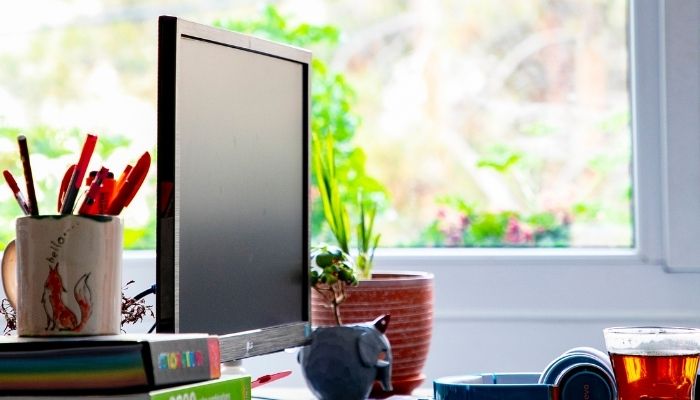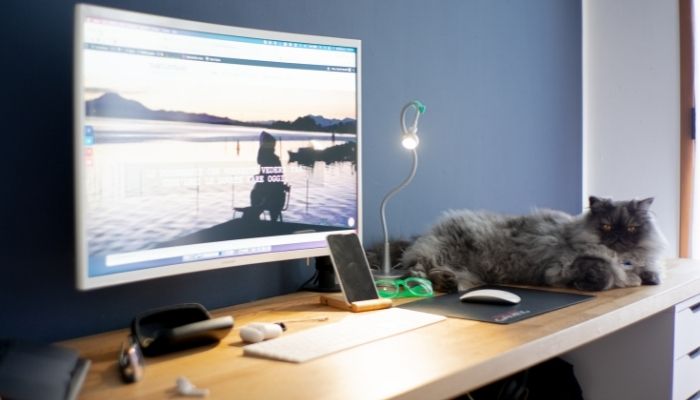High-definition monitors communicate with signal sources such as digital cable boxes, DVD players, and gaming systems via high-definition multimedia interface (HDMI) connectors.
Various HDMI connections are available on most high-definition monitors, allowing for simultaneous connection of multiple devices.
Utilize separate HDMI ports to access all HDMI devices connected to your monitors. Multiple inputs use to toggle between different sources.
For illustration, if you own both a Console and a Computer, both can be connected to the Monitor and switched using the Monitor’s buttons. Alternatively, an external HDMI switch would be required.
Define HDMI?
HDMI stands for “Multimedia Interface, a specification for sending digital video and audio concurrently from an origin, such as a computer or a television cable box, to a computer display, television, or projector.
Developed by a collaboration of electronics manufacturers, the interface has gained widespread adoption, with practically all televisions and computer displays supporting it.
What is the Purpose of an HDMI Connector?
You will utilize HDMI cables and connections of all types in practically all conventional use situations to carry synchronized audio and video signals from a source to the receiver or display.
However, HDMI’s broad backward compatibility with previous connection protocols can be utilized exclusively for audio or video streams in some circumstances.
It is particularly advantageous because, with the appropriate adaptor, HDMI cables and connectors may use to connect various port types to hardware devices.
Connector Types for HDMI

The following are the various HDMI connector types:
HDMI Type A connector
This connector was introduced with the initial specification and has remained the standard’s backbone ever since. The Type-A connector is the most familiar to consumers of audiovisual equipment.
It is present on various items, including televisions, DVD players, satellite boxes, recorders, and games consoles. The Type A HDMI connector is the most sturdy, where size consider.
HDMI Type B connector
This HDMI connector was also introduced in 2002 with the original standard and intend for dual-link DVD-I video transmission. You never utilize the connector in goods because the speed of a single link exceeds that of the previous dual-link with the advent of HDMI 1.3.
Due to the connector’s bigger size compared to the single link standard type, there was no purpose of using it. It is, nevertheless, retained within the standards.
HDMI Type C connector
The mini-HDMI connector is slightly smaller than the Type A connector at 10.42 mm 2.42 mm but retains the 19-pin arrangement.
The mini-HDMI connector includes all of the capabilities of the more significant HDMI Type A connector but is significantly smaller.
The HDMI Type D connector
It is very relative in size to the micro-USB connector, and as a result, Type D refers to it as a micro-HDMI connector.
HDMI Type E connector
The HDMI Type E connector is designed specifically for automotive applications. HDMI Version 1.4 added this connection. It features a locking latch and a protective casing to keep dirt and moisture out to prevent it from vibrating loose.
Additionally, a relay connector is accessible for connecting conventional consumer cables to automotive ones, allowing an interface to consumer audiovisual (AV) devices, which is becoming more prevalent.
Types of HDMI Cables
HDMI cables offer a range of capabilities that vary according to their signal data speeds (bandwidth) and the HDMI version to which they are connected.
The following are the several types of HDMI cables:
Standard HDMI Cables
These cables support conventional HDTV broadcast, cable, and satellite Television resolutions (up to 720p and 1080i) and have a data transfer rate of up to 5 Gbps. It supports HDMI versions 1.0 through 1.2a.
Normal Automotive HDMI Cable
Like a standard HDMI cable, this cable links portable or in-car DVD players and other media to in-car video screens. Additional shielding includes protecting against other vehicle electrical systems and cabling interference.
High-Speed HDMI Wire
This cable designed to facilitate 1080p and 4K (30 Hz) video resolutions and 3D and Deep Color. It enables up to 10 Gbps Transfer rates. It supports HDMI versions 1.3 to 1.4a.
High-Speed Automotive HDMI Cable
This Type has the same capabilities as High-Speed HDMI cables but gear for use in an automobile.
Superior High-Speed HDMI Wire
This cable type optimizes the reliable transmission of 4K/UltraHD video, including 4K/60 Hz, HDR, and enhanced colour gamut. The cable supports a maximum bandwidth of 18 Gbps and is suited for HDMI versions 2.0/a/b.
Ultra High-Speed HDMI Cable
This wire type has all of the cables above types’ features, plus compatibility for 8K video with HDR and even 10K quality.
It has a bandwidth (transfer rate) of up to 48 Gbps and is less vulnerable to EMI (electromagnetic interference) generated by some wireless devices. This cable is compatible with HDMI version 2.1.
An Efficient Way to Switch HDMI 1 to HDMI 2 on the Monitor
- Beneath the right side of the screen, run your hand palm, willing to face the display.
- When you settle to the bottom of the monitor display, flip your hand so that it is towards the ceiling and feel for the bottom buttons.
- Press once really far one (in a row). It will take you to the “default” menu.
- Continue running your fingers around the right side until you reach the final to the second button.
- This section should be labelled “Input.” It is necessary to press.
- Keep pushing the “Input” or “Source” key until the Monitor displays “HDMI 1” instead of “HDMI 2.”
- Additional video interfaces like DVI, VGA, DisplayPort, and composite video found commonly.
- You can also toggle between those inputs using the monitor buttons.
Multiple HDMI inputs are frequent on monitors, as is the presence of multiple input types. On a larger scale, if you have many audio and visual input devices (cable, antenna, tape deck, CD, DVD, Roku, Apple TV, Chromecast, PlayStation, or PC, for example), the typical course of action is to get a receiver. The receiver utilize to change the inputs.
Several Benefits of HDMI Cables
- The first advantage of HDMI connections is that they transmit uncompressed digital audio and video, resulting in the highest possible image quality. To achieve the highest resolution, pick Category 2 HDMI cables – High-Speed Cables, verified to 340 MHz and support resolutions such as 1080p60 and 2160p30, significantly more than Category 1 HDMI cables – Standard Cables, which support resolutions such as 720p60 and 1080i60.
- Additionally, HDMI cables support legacy interfaces such as DVI. All that is required is a DVI-HDMI cable. It is a feature that is not available through any other interface.
- In comparison to their similar equivalents, HDMI cables carry signals exceedingly quickly. Even the most straightforward HDMI cable can transmit data at a rate of at least 5 GB per second, ensuring a relatively rapid signal delivery. Additionally, HDMI cables transmit nearly twice the amount of data required for High-Definition, securing their place in future technological breakthroughs.
Frequently Asked Question
How Do I Switch Between HDMI Ports on a Monitor?
Numerous inputs are available on many modern monitors. These are selectable through a button on the Monitor. If you have a display with a single piece of information, you can utilize a KVM switch. Many KVM exchanges can also switch between keyboard and mouse; however, you can also use individual peripherals.
How Do You Change the Input on Your Monitor?
If the default input is not currently active, the Monitor will broadcast the presently detailed information. By hitting Menu on the front panel button and choosing Source Control, followed by Default Source, you can alter the default source.
Do I Need 2 HDMI Ports for 2 Monitors?
Sometimes your computer (often a laptop) only has one HDMI connector, but you require two ports to connect two external monitors. You can utilize a switch splitter’ or ‘display splitter’ to have two HDMI ports.
Conclusion
HDMI connectors and cables offer many alternatives for transmitting extremely high-quality, high-bandwidth audio-video signals between a wide variety of modern leisure and communications equipment.
Additionally, the correct adapter can provide a link-up between devices lacking comparable HDMI ports due to their engineered additional functionality with older audio-video transfer from HDMI1 and HDMI 2 protocols.
I hope this post assisted you in determining How to Switch From HDMI 1 to HDMI 2 on Monitor? Additionally, this article discusses the many types of HDMI connectors and HDMI cables for your convenience.
Read Also:

